#red sided flat millipede
Text
Okay, it’s Odaiba Day, if there is any day I am going to get a partner line together for Chosen Devin AUs it is today damnit...
So, the Aberamon line, kinda sorta. An Aberamon line.
~~
Erynmon
Stage: Baby/Baby I
Type: Seed
Attribute: Data
Description: A small brown orbular digimon with three large, round violet, petal-like wings coming from it’s top, the wings droop down, hiding much of the center from view and dragging on the ground, can use wings to float and twirl in the air and on breezes, has two large solid yellow eyes
Attacks: Sepal Swat (bats at opponents with it’s wings)
Hegrekmon
Stage: In-Training/Baby II
Type: Fairy
Attribute:Data
Description: A small, ovular, white creature that appears to be formed from smooth, shiny stone, with a jagged crater-esque mouth, two large pastel-blue eyes, and three small round feet
Attacks: Dizzy Dance (disorients enemies by circling them at high speeds)
Aberamon (Sun)
Stage: Rookie/Child
Type: Holy Beast
Attribute: Vaccine
Description: A mid-sized creature with a flat, almost square body, upper portions covered in what appears to be long, flowing, light brown ‘Pele’s hair’, skin is a very pale yellow, possesses four thick spider-like legs, one at each corner, ending in one large claw each, head is large, round, and attached directly to the body between the front-most pair of legs, possesses four large eyes- right pair green and left pair violet, mouth is large on the head and full of sharp teeth, two small black horns rest on the top of the head
Attacks: Shard Shell (tackles opponent with full force)
Dididirumon (Sun)
Stage: Champion/Adult
Type: Holy Beast
Attribute: Vaccine
Description: A large creature reminiscent of a flat-backed millipede, possesses no legs, segments all extend into solid fin-like forms, back and fins dark brown, head and underbelly very pale yellow, no antennae but does possess a pair of black antlers with two tines, mouthless head with four angular eyes- right pair green and left pair violet, segments edged in electrum, ‘swims’ through water and air does not touch ground under normal circumstances
Attacks: Solar Tribute (generates ball of fire between antlers and fires at opponents), Coils (entangles and squeezes opponent)
Oppoimon
Stage: Ultimate/Perfect
Type: Mythical Dragon
Attribute: Vaccine
Description: A massive, flat creature reminiscent of annelids with a lizard-like head, a dozen pairs of dark grey metallic claws line the sides of the body, possesses two large forelimbs similar to those of a mantis in the same color as the claws, tail ends in an screw of the same, head has a metallic dark grey skull helmet, mouth has two rows of sharp teeth, four angular yellow eyes, jagged ochor-red stripe under each eye, down each forelimb, and on either side of the ‘spine’ down the back, primary color is a shiny grey-green, typically terrestrial
Attacks: Striking Ambush (strikes out at enemies with forelimbs), Pressure Quake (causes the ground to shake violently and geysers to erupt under the enemy)
Rumalmon (Moon)
Stage: Mega/Ultimate
Type: God Dragon
Attribute: Vaccine
Description: A large Osmosian-shaped creature with a dark grey-green hide, forelimbs are massive in comparison to the body ending in heavy, skeletal hands half the size of the torso, skeletal tail is twice as long proportionally as an Osmosian tail, possesses four large pairs of eyes- four violet running down the belly and four green running down the back, head is eyeless, canine teeth are doubled as compared to an Osmosian, skeletal portions are bright yellow-orange, possesses seven four-tined electrum antlers, one electrum chain is wrapped around the base of each antler and wraps loosely around the body and limbs, can locomote quadrupedally, bipedally, and through floating
Attacks: Holy Sabre (stabs and/or slashes as enemies with claws), Calling (releases blinding light from eyes that radiates through area, damages ‘unholy’ opponents), Nightburst (unleashes a barrage of energy blasts onto opponents)
#fakemon#fun fact: most osmosian empire holy digis come in two variants- sun & moon#and have heterochromia#due to the elevation of such things in savar#the powers are generally changed (fire vs energy | darkness vs light | etc)#just as the colors are though#so a bit different from having like a black variant or something#was oppomon inspired by a critter from my babo'verse? why yes yes it was#for the second year in a row i make a fakemon for odaiba day
2 notes
·
View notes
Text
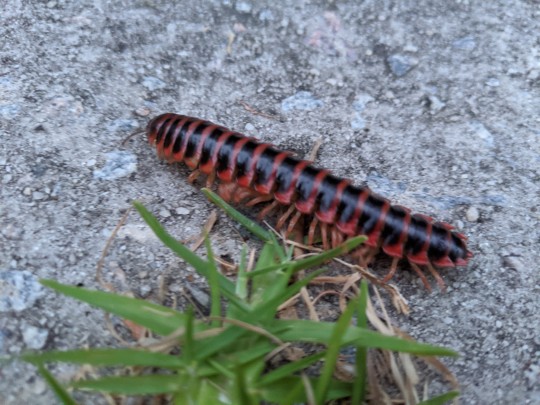


@bakageta submitted: I saw this friend before I left for work in central SC!
Not to be dramatic but I love this millipede more than I love a good number of my own family members. This absolutely stunning pal looks like a red-sided flat millipede, Sigmoria latior! They are also sometimes black and yellow. :)
#animals#bugs#submission#myriapods#flat backed millipede#flatback millipede#red sided flat millipede
183 notes
·
View notes
Photo
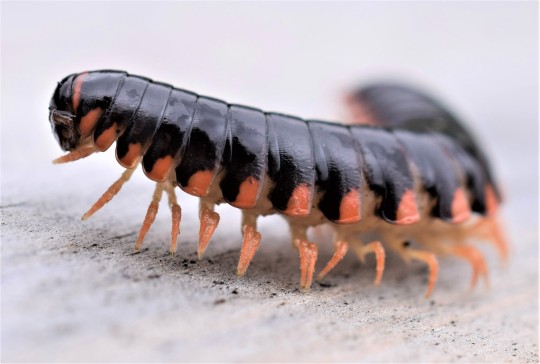
Red-sided Flat Millipede
#red sided flat millipede#millipede#Sigmoria aberrans#sigmoria#wildlife photography#arthropod#diplopoda
163 notes
·
View notes
Text
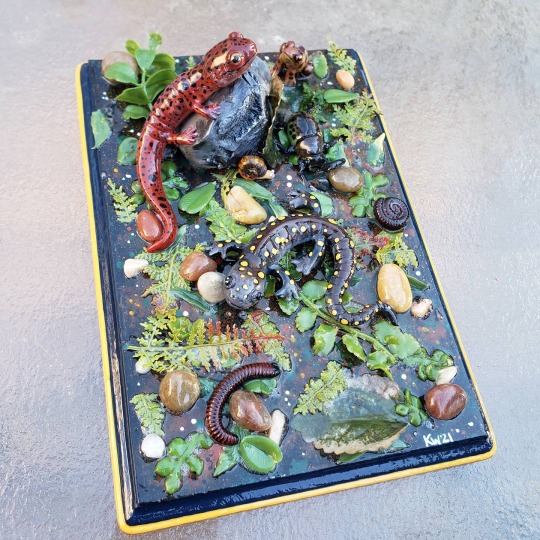



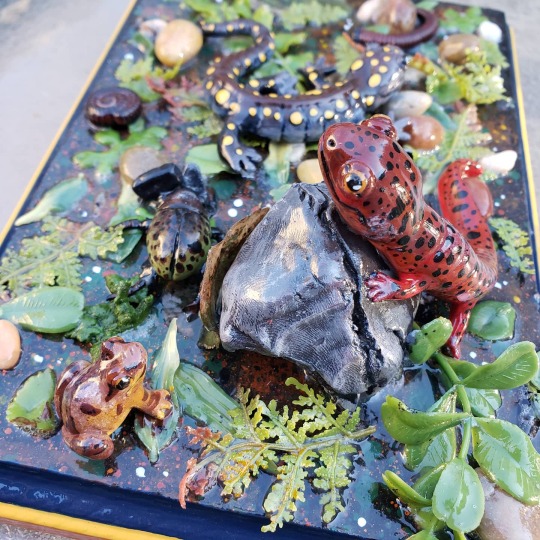
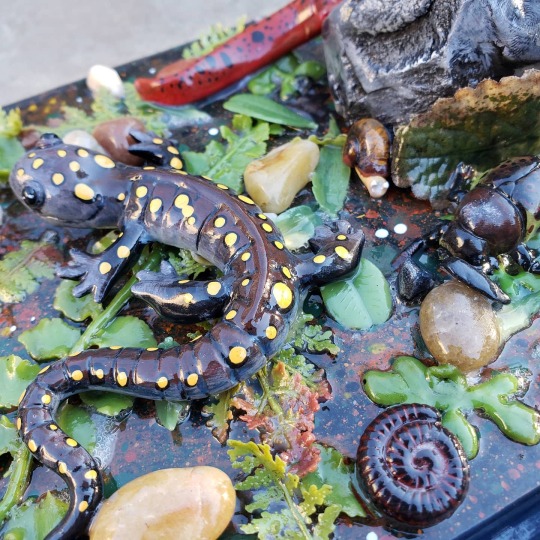

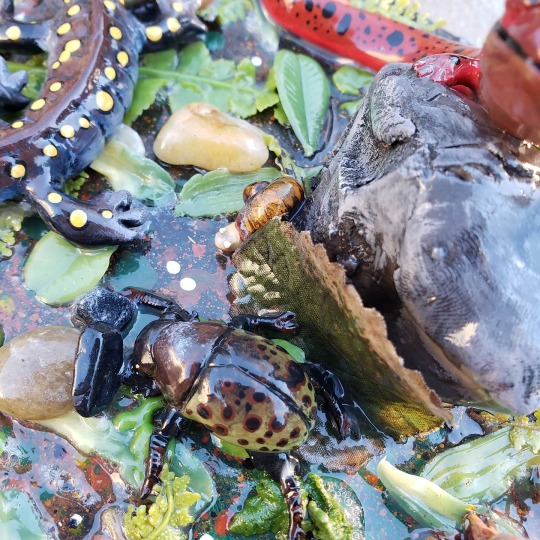


A scene of a north eastern USA forest floor! Featuring a spotted salamander, red salamander, spring peeper, eastern hercules beetle, North American giant millipedes, a snail, and a variety of leaf litter and stones. These forest floor pals all get along and are having a nice adventure with each other. This one of a kind mixed media sculpture is made with plastic plants, stones, polymer clay, painted with acrylics, and sealed with a polyurethane varnish.
Come snag this from my Etsy before it scurries away!
Painted and varnished on all sides for durability, and comes with hanging hardware and bumpers already attached. Hang this on your wall, display on a shelf, or lay flat and enjoy.
This piece measures 6.5"x9.5"
61 notes
·
View notes
Text
Rica and Mochar
“General.”
“Hm?”
“What’s your favorite kind of writing?” Mochar asked her, voice soft despite the hoarse tone that seemed permanently engraved in his throat.
Rica spared him a look, face as impassive and cool as it always was, her red eyes boring into where his own would be had he been turned her way. But as it stood Mochar was kneeled on the floor, a few millipedes twining through his fingers as he held them gently, cooing sweet words of praise at them as if they were a darling pet, just clicks and guttural growls sounding from his throat and chest that reverberated through the room.
Rica did nothing more than regard him quietly, red eyes reflective as moon water watching his every move with a perception only those born and bred for battle could fully master. She stood off to the side, leaned back against the wall nonchalantly, would have looked without a care had her hands not been clasped in her own unique way; thumbs touching pad to pad, sharpened nails of her fingers pressing into thick, scarred skin from decades of sigil weaving before her death and years after.
Surely the thought put into her hand placement aided in her infamy for sigil weaving even with the heavy risk it posed to her capability of performing such feats for the future.
She watched as Mochar waited on her answer, if she were to give one. Something that simple was a mighty gamble whenever Rica was involved. And as he waited he seemed to hunch in more and more, her eyes on him likely aiding into his discomfort. This was Mochar’s normal behavior, to hide himself, make him seem smaller, stay quiet and out of the way so as not to arouse both suspicion and ire.
She secretly admired how despite his gentle demeanor he never truly let anyone push him over.
Though these thoughts were kept quiet and to herself.
She wasn’t one for sharing.
She thought about his question carefully and her answer more cautiously when finally she spoke. “I’d have to say poems.”
“Poems.” Mochar said, more of a gentle, inquisitive prod than anything. To anyone else it just sounded like a flat statement, meant to just parrot. But she read it as clear as the question that it was.
“Poems don’t require a lot of words. Or even….effort for the most part. Anyone can write them and I think…I think just jotting down words in a simple manner could…expose your truth. Who you are as a person. It’s just you…as you are. One can find it hard to lie when writing a poem…lie convincingly that is.”
The other was quiet for a few moments, seemingly mulling over her words. A soft “Okay” left his mouth in lieu of an actual answer. And from the quiet that lapsed she guessed it was the end of his inquiry.
And so she went back to staring at nothing, the absence of her stare on him relaxing the other enough that his murmurings of sweet nothings to his beloved bugs resumed, the chittering and rush of the thousands of bugs that crawled across the floor and over everything they could, including her feet, just a soft song to those that truly listened.
And she listened.
#writing tag#ok so this is just more of acharacter exercise on Rica#the female mc of the trio#mochar is the new guy with the black bandages#just a first draft of their characters#and not even accurate since right after i wrote this i wanted to have Mochar be mute#so ill probably go back and tweak this obviously#just to see how i can make that work for me
3 notes
·
View notes
Text

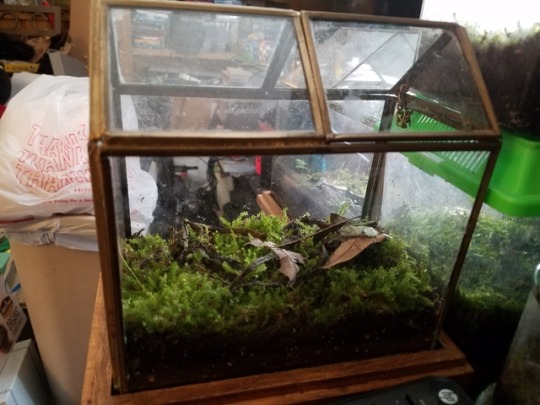
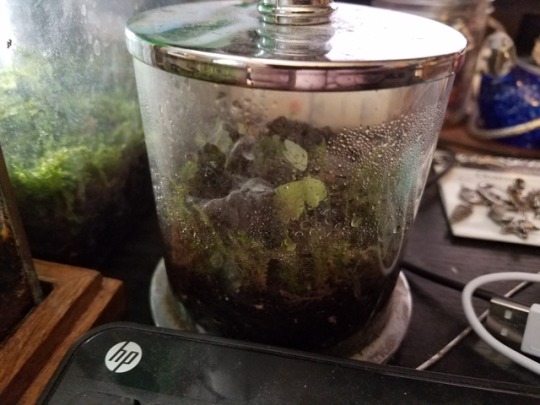




I think I really enjoy planting little terraria.
The first tank is pracefully set up with 5 Red Sided Flat Millipedes, about 15 pill millipedes, a male earwig, and a garden snail.
The second is home to about 10 pill millipedes. (And eventually a Bold/Daring Jumping Spider)
The third is home to 4 pill millipedes
The rest are newly planted and as yet uninhabited.
I need springtails and woodlice for all of them.
I think I'd like to have a few American Giant millipedes in tank #4.
Possibly a Florida Blue/Eastern Bark centipede in #5
An Eastern Fire Centipede might be comfortable in #6.
And the height of #7 makes it a promising habitat for a few Southern Devil Scorpions.
My first loves were the native invertibrates, and I am excited to enjoy a few again. ^v^
29 notes
·
View notes
Text
Journal 9: Saying Goodbye
Wednesday December 12th, 1:03 PM, 47 degrees, cloudy.
Ravenna Park
Important Note: I’ve assembled repeat photos from a distance side-by-side, as well as the repeat close-up photos, and some new species I found at my site this week. All are labeled with the date and species when appropriate.
The branches of the largest red cedar in my area have undoubtedly grown and extended to form what resembles a curtain between the main clearing of my site and the area with taller shrubs. I’ve noticed sword ferns tend to grow out of a central point and fan outwards like a small circular bush. The one in my site has almost entirely died. What’s strange is that there are a couple sword fern clusters right outside my site that have remained mostly unchanged throughout the quarter. I have been thinking about this, and also why my site appears to have somewhat different vegetation and biodiversity than the rest of Ravenna Park. I realized that my site, right next to the creek, is at a significantly lower elevation than the rest of the park. This made it so observing birds became much easier if I went up a nearby trail because it was closer to the tops of conifer trees. In this way, I heard a lot of songbird calls (including the northern flicker and black-capped chickadee) from a maddening distance but at my last site visit none came close to my site. Another potential consequence of the lower elevation is the soil quality having poor water retention. I noticed during rainier points water tended to collect on top of the roots and moss rather than penetrate the soil. Digging beneath the layer of fallen leaves and conifer needles, the exposed soil is very sandy and interrupted by other plant/tree roots.
A new development to my site is the growth of candlesnuff fungus. It is growing out of a small log and in the adjacent area at the base of a western red cedar tree. The only closest fungi is the smoky-gilled hypholoma fungus growing out of the same rotting log I’ve observed all quarter. It has been interesting to see the mushrooms grow, die, and grow back in almost the same location. Beneath another log, I discovered a round-back slug, flat-backed millipede, and common earthworm with shifting the soil around with a stick. Other than that, the most common plant in my area is the three-leaf goldthread (in the buttercup family). These cover the ground more than other plants I’ve found and attempted to identity, including (but not limited to): crested wood fern, salal, vine maple, herb Robert, a tiny cluster of hairy bittercress, and creeping buttercup. Overall, I witnessed a lot of the vegetation of my site slowly decay and die and be replaced with new plants. The repeat photos are an obvious example of this. The replacement part of the process is of particular interest of me. I can’t help but wonder about the decomposition process of the plants I saw disappear over the course of 10 weeks. Where do they go? Despite by regular observations, so much occurs from invisible processes that I could only really observe if I stayed in my site for consecutive days.

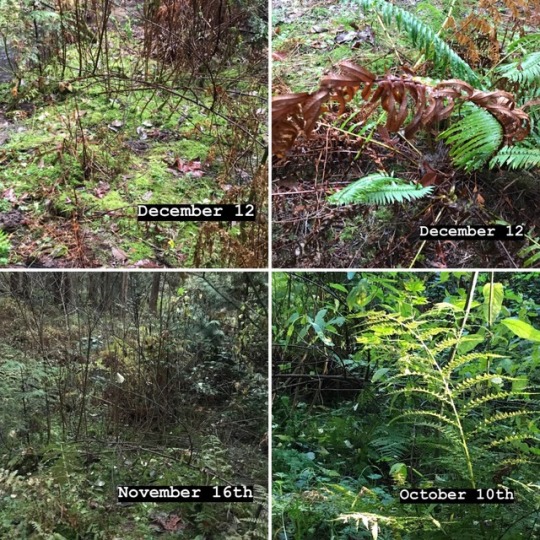

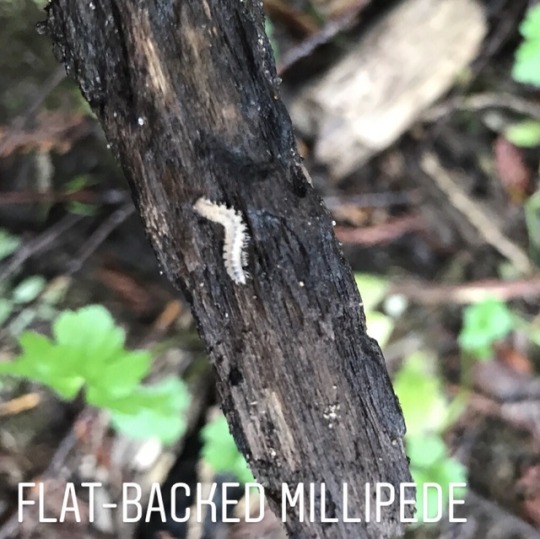


1 note
·
View note
Photo
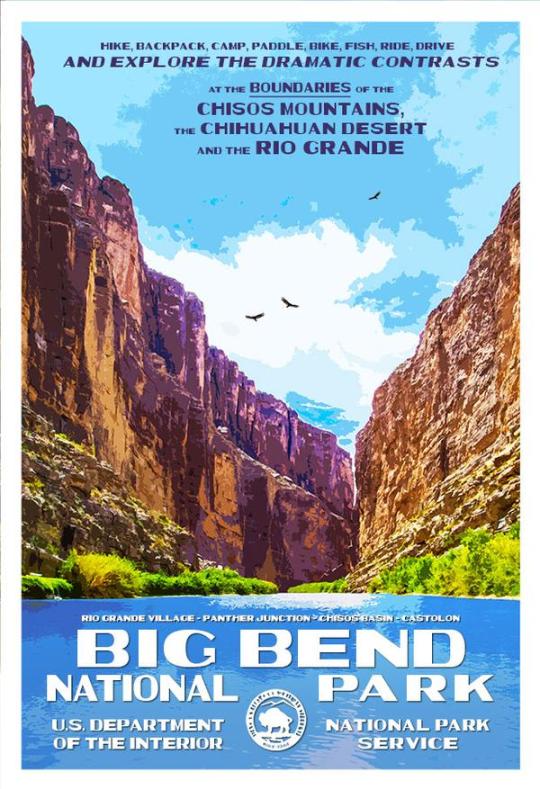
Best Things To Do in Big Bend National Park
Best Things To Do in Big Bend National Park: Big Bend National Park offers nearly limitless opportunities for scenic driving, hiking, camping, backpacking, mountain biking, horseback riding, bird watching, wildlife observation, and stargazing. Additionally, the Rio Grande borders the park for 118 miles providing options for half-day floats to extended excursion by raft, canoe, or kayak. My name is Rob Decker and I'm a photographer and graphic artist with a single great passion for America's National Parks! I've been to 51 of our 61 National Parks — and Big Bend is one well worth the visit. I have explored many areas of the park — so I'm ready to help! So if this is your first time to the park, or your returning after many years, here are some of the best things to do in Big Bend National Park! Scenic Drives 100 miles of paved roads and 150 miles of dirt roads connect the desert to the mountains and the river and offer exceptional ways to explore the park by vehicle. Here are the top five scenic drives — on paved roads! Chisos Basin Road – 6 miles A drive to the Chisos Basin is an excellent way to experience the transition between arid desert and cooler mountain habitats. As this scenic, winding road rises over two thousand feet above the desert floor, it offers breath-taking vistas of the mountain peaks and the erosion-formed basin area. The Chisos Basin has a visitor center, campground, lodge, restaurant, camp store, and access to miles of hiking trails. Ross Maxwell Scenic Drive – 30 miles A trip along the Ross Maxwell Scenic Drive highlights the geologic splendor Big Bend is famous for, and offers many scenic overlooks and exhibits along the way. Sotol Vista, Mule Ears Overlook, and Tuff Canyon are all worthwhile stops. Continue the drive to the magnificent Santa Elena Canyon, where limestone cliffs rise 1,500′ above the Rio Grande. A short trail leads into the canyon Panther Junction to Rio Grande Village – 21 miles The drive to Rio Grande Village traverses ancient limestone and has marvelous vistas across the river to the magnificent Sierra del Carmen escarpment. In twenty miles, the road descends nearly two thousand feet. There are several worthwhile stops and highlights along the way. Dugout Wells includes a desert nature trail and a shady oasis, nice for picnicking and birding. A soak in the Historic Hot Springs is also a popular activity. Persimmon Gap to Panther Junction – 28 miles This road connects the north entrance to park headquarters at Panther Junction. From Persimmon Gap, the road descends a long, gentle, gravel slope to Tornillo creek and Tornillo Flat. The Rosillos Mountains rise to the west; to the east the Dead Horse Mountains dominate the skyline. Maverick Entrance Station to Panther Junction – 23 miles This drive, through striking desert scenery, has excellent views of the surrounding mountains. Several roadside exhibits describe wildlife that might be seen along the drive. Junctions for the Chisos Basin road and Ross Maxwell Scenic Drive are located along this route. Hiking Day Hikes Big Bend is a hiker's paradise containing the largest expanse of roadless public lands in Texas. More than 150 miles of trails offer opportunities for day hikes or backpacking trips. Desert Hikes The Chihuahuan Desert covers about 80% of the park and surrounds the Chisos Mountains. Bare, rocky ground and sparse vegetation are hallmarks of the desert, but there is plenty of life here. Look for termite nests along plant stems, exoskeletons of millipedes, animal scat, and rodent and reptile tunnels. Bird life is plentiful, especially in the morning; look for nests hidden in yuccas and cacti. In the spring, bluebonnets, paintbrush, bi-color mustard, desert marigold, yucca, ocotillo, and cacti blossoms add color to the desert landscape. Mountain Hikes The Chisos Mountains contain some of the most rewarding day hikes in Big Bend, especially during the summer months when it is too hot to hike at lower elevations in the park. It is not uncommon to see tracks and scat of black bear, mountain lions, and gray fox along Chisos Mountains trails. Carmen Mountain white-tailed deer, rock squirrels, whiptail lizards, spotted towhees, tufted titmice, and Mexican jays are also common in these mountains. River Hikes The Rio Grande creates a distinct environment in Big Bend National Park. Countless bird species can be found in the riverbank vegetation. The river provides water for many desert animals; look along the muddy shoreline for tracks, signs, and scat. Backpacking Backpacking in the Desert The most remote areas of Big Bend National Park are best left to experienced backpackers. Each year, park rangers respond to desert emergencies when hikers are not prepared for the heat and extreme conditions of the desert. Due to the complex topography and vague trails/routes, a topographic map and a compass/gps are necessary for some hikes. Not for novices, you will need to be fully equipped and physically prepared to pack your gear and water into the desert and camp primitively. River Trips Floating the Rio Grande Big Bend offers a variety of river adventures. Enjoy a day trip, or plan an extended float through spectacular limestone canyons. If you have the time and a spirit of adventure, you may want to consider a river trip. Seeing the park's canyons from the middle of the Rio Grande can be an incredible experience. There are many possibilities including half-day floats or multi-day excursions. Floating the Rio Grande can take you through miles of canyons up to 1,500 feet deep, where the sunlight may reach the bottom only briefly on winter days. As in other parts of the park, your ears may tell you more than your eyes. Listen for beavers crawling through the brush;you might catch a glimpse as one slides down the riverbank into the water. Turtles, especially red-eared sliders, often sun themselves on rocks and logs just above the waterline. Great blue herons and green kingfishers are just some of the many birds you may see flying along the river. Bicycling Lightly traveled roads and varied terrain make Big Bend a premier bicycling location. Over 100 miles of paved roads and 150 miles of backcountry dirt roads provide challenges for riders of all types and abilities. Bicyclists must be extremely cautious and well-prepared, but bicycling allows outstanding panoramic views unobstructed by a windshield. It also allows the bicyclist to see and hear some of the smaller wonders of Big Bend from a more intimate viewpoint. Bird Watching Big Bend's position near the 100th meridian in the middle of the continent and along a migration route makes the park ideal for bird diversity throughout the year. Northern species migrate here for the warm winter climate, while birds from the tropics range this far north to breed in the spring. One of Big Bend's highlights, the Colima warbler, is a predominantly Mexican species that only nests in the United States in the Chisos Mountains from April to September. Fishing Sometimes visiting a National Park can seem as though time is not on your side and the pace of “have to see everything” takes over. Perhaps fishing, which might seem unusual in a desert park, could be just what the “ranger” ordered. This activity is less harried, relaxing, and most of all, edible. Fishing the Rio Grande is something that is fun for visitors of all ages. And best of all it's free, and requires no Texas fishing license. All that is required is a fishing permit which may be obtained at any open visitor center. So if a lazy day by the Rio Grande is something you might enjoy, ask a ranger about fishing opportunities here in the park Stargazing On the clearest nights, more than 2,500 stars are visible to the naked eye! Big Bend is known as one of the outstanding places in North America for stargazing. In fact, it has the least light pollution of any other National Park unit in the lower 48 states. One factor that makes this possible is simply the sparse human occupation of this region. Click here to see the Big Bend National Park poster. Rob Decker is a photographer and graphic artist who had the rare privilege of studying under Ansel Adams in Yosemite National Park when he was just 19 years old. Now, Rob is on a journey to explore and photograph all of America's National Parks. He's creating WPA-style posters to help people celebrate their own national park adventures — as well as encourage others to get out and explore! Click here to learn more about Rob and The National Park Poster Project! https://national-park-posters.com/blogs/national-park-posters/best-things-to-do-in-big-bend-national-park?utm_source=rss&utm_medium=Sendible&utm_campaign=RSS
0 notes
Photo







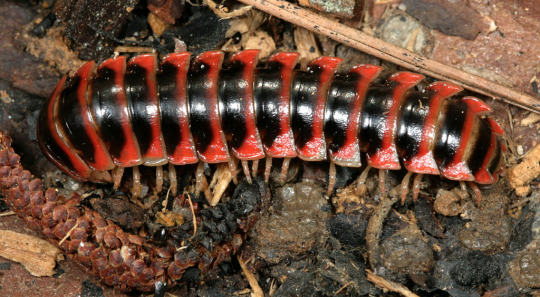
Red-sided flat millipede, Sigmoria latior, Southeastern US
Photos by petercoffey (1), mnharnet (2), kbeza31979 (3), dc_chadwick (4-5), eraskin (6), and Patrick Coin (7-8)
#animals#curators on tumblr#bugs#myriapods#millipede#flat backed millipede#red sided flat millipede#one nice bug
223 notes
·
View notes
Text
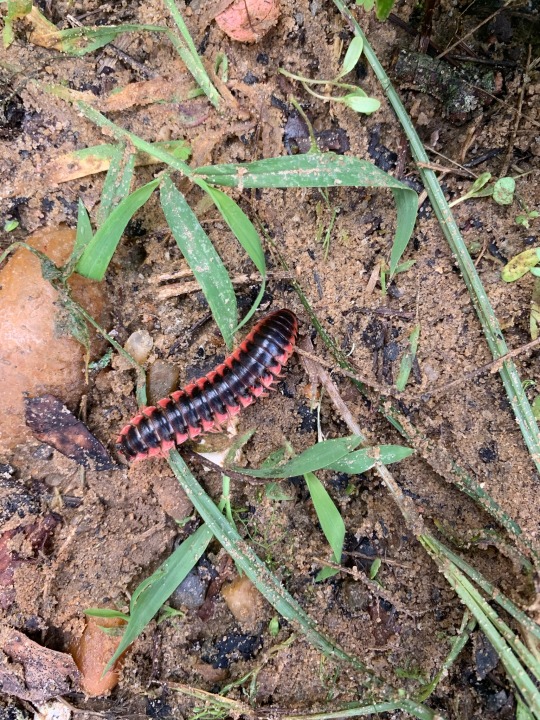
He was trundling along at my job, thumb size
Beautiful pede! These dudes were the One Nice Bug just the other day. Well, red-sided flat millipedes were, and I can’t say that’s what this is for sure, but looks like the same genus (Sigmoria) at least. Thank you for sharing this flat friend :)
97 notes
·
View notes